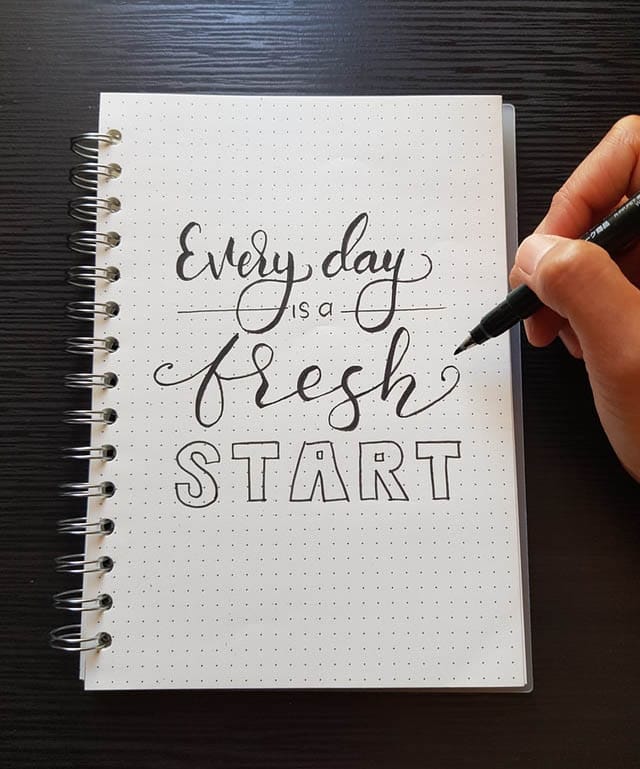A lot has happened in the world in the past year, including the huge revamp in the way we work, it’s easy to be overwhelmed. Today, you’re going to learn how to manage your mental response to work and other areas of your life.
If you had a way to boost your focus, manage stress, reduce anxiety, and improve emotional intelligence, would you take it? If your answer is yes, you’re in luck. Practicing mindfulness at work is the way.
Chances are you’ve heard a lot about it, maybe even practiced meditation for a while. Mindfulness comes with a lot of benefits that’ll cascade to every area of your life. However, to get them, you must stay consistent with your practice.
As you read on, you’ll learn what mindfulness really is and its benefits at work. Then you’ll learn ways to implement mindfulness at work with your team and reap the rewards collectively.
What is Mindfulness?
Mindfulness is a state of being aware of your experiences without judging them. It’s like watching the clouds float by without thinking about their texture or size. It’s a state where you’re fully in the present moment.
Jon Kabat-Zinn, who’s popular for his work on mindfulness-based stress reduction (MBSR), defines mindfulness as “The awareness that arises from paying attention, on purpose, in the present moment and non-judgmentally.”
One way to practice mindfulness is by meditating, though many people mistake them for the same thing. Keep reading to know why mindfulness in the workplace is important.
Why is Mindfulness at Work Important?
A non-judgmental awareness of the content of your mind and staying present gives you clarity. That way, you won’t decide based on how you feel or from experiences. You can agree this level-headedness is important when making decisions.
Some other ways practicing mindfulness can benefit employees and their managers include:
Rewiring your brain
A study in 2011 published in the Psychiatry Research Journal shows that meditating (a mindfulness practice) for 30 minutes a day can change the brain’s chemistry.
MRI scans show a growth in the area of the brain responsible for learning and memory and reducing gray matter in the amygdala. So, paying attention to your mind can give you a lifetime brain boost.
Treating anxiety

A decade ago, a group of scientists created Mindfulness-Based Cognitive-Behavioral Therapy (MBCT). In a bid to prove that MBTC is effective at preventing relapse in depression patients, The Oxford Mindfulness Center conducted huge research in 2016.
The research included teaching patients mindfulness skills and encouraging them to embrace their emotions without letting them influence them. The result showed that the patients who practiced mindfulness were 23% less likely to suffer a relapse.
This is great news, as anxiety and depression are issues common in the workplace. With a mindfulness culture in place, these will reduce and employees can perform at their best.
Reduces stress
Stress.org shows that 75% of workers believe that employees have more stress on the job than a generation ago. That’s not all, 25% of people view their job as the main stressor in their lives. This is not far-fetched because of the pace of work nowadays.
Employees and managers on-site and remote can heave a sigh of relief with some mindfulness practice. Eckhart Tolle, in his book The Power of Now, sums up the source of stress beautifully as being in one place (physically or mentally) while wanting to be in another.
With mindfulness, you will either accept what is or change to what you want. Either way, there’s no need to be anxious or to worry. Hence, a stress-free life.
Improves social relations
Mindfulness helps you become aware of your thoughts and feelings without identifying with them. If you train your mind to always be in this mode, you’ll be more emotionally intelligent with others. You’ll see things from their perspective and better relate to them.
You’ll become friends with the ‘misunderstood’ staff and everyone wonders how you two get along so easily.
Tips to Create a Mindful Workplace
Now you know what mindfulness is and the benefits it brings to the workplace. Let’s go into how you can implement mindfulness at work to reap those benefits.
1. Create periods of casual connections
We are social animals, and a good dose of social connection is essential for well-being. In this fast-paced world, it’s easy to get engrossed in work that the team forgets to socialize.
As a manager, you need to help your team find a balance between work and casual connections. Organizing a weekly hangout, for instance, is a good way. This is especially good for a remote team. There has been a rise in reports of anxiety and isolation among employees since the pandemic.
To enhance the effect of this physical or virtual gathering, you can make a rule that attendees keep their phones out of reach. That way, everyone can stay present and engaged.
2. Encourage your team to start their days with positivity

Morning rituals impact how the day unfolds. It’s easier to let everyone use their discretion, but a positive human connection will make things even better.
Sending out an uplifting quote before the start of the day can do the trick. Other things you can try include:
- Do a team shout-out or recognize someone’s effort
- Have everyone take 30 seconds to talk about what they’re grateful for
- Share a positive story
The aim is to raise the team’s spirit and have them ready to conquer the day.
3. Use mindfulness reminders
As a beginner in the practice of mindfulness, it’s easy to forget to stay present. This is so because the mind’s default mode is to wander. For every time you let your mind do its thing, you miss out on a chance to be creative or respond appropriately to a situation.
You can create triggers to remind you to be mindful. When your phone beeps, take a moment to stay mindful before checking the notification. It could be whenever someone talks to you when you’re walking, or anything at all. The goal is to have something that reminds you to be mindful. You can teach this to your team.
4. Focusing on one thing at a time
With so many things to do in a short time, it has become a habit to multitask. However, research shows that multitasking can reduce productivity by up to 40% as you take longer to complete the task. Our brain just isn’t as good at handling multiple tasks as we like to think.
Dandapani, a Hindu priest and an entrepreneur suggests ways you can train your brain to focus. According to him, it takes practice. For every action in your daily life, focus on that one thing you’re doing. If you’re brushing your teeth, don’t mentally map out your day. If talking with someone, give them your full attention.
If you continue this way, before long, you’ll master focus and stay with a task from start to completion.
5. Share mindfulness apps with your team for practice
Not everyone knows about being mindful, or how to practice. To avoid the risk of plunging your team into the deep, help them with apps that offer guided practice. It makes being mindful easier for them, and the freedom of choice will encourage them to own their practice.
Popular mindfulness apps include:
- Calm
- Stop, breathe, think
- Headspace
- Smiling mind
- Aura
6. Create time for a group meditation
Meditation is a popular way to practice mindfulness. Doing it as a group will foster a sense of togetherness and can heighten the effect. You can clear up space in the office to do it. If you’re managing a virtual team, you can do it online too.

If none of you have in-depth experience with meditation, you can hire a local instructor to guide the group or share an audio recording of guided meditation and listen together. The goal is to meditate as a group so everyone can progress on their quest for mindfulness.
Improve Your Well-being with Mindfulness
There are many ways to practice mindfulness. So, feel free to go beyond this list if you’re curious. Since you now know what mindfulness is, you can even create your own practice. Perhaps that’ll speed up your growth. The key takeaway is to stay in the present moment and not let your mind wander.
Don’t start beating yourself up if you catch your mind wandering (trust me, it’ll happen at first), it takes practice to master. One thing you can rest assured of is that if you stick to your practice, you’ll reap the benefits.






































